Site SUMMIT
ALASKA
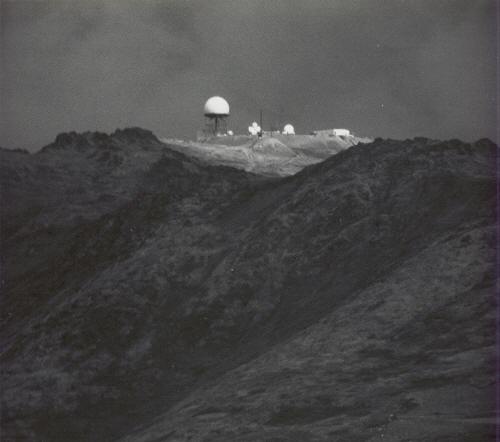
Bravo Battery
1st Battalion, 43rd Air Defense Artillery


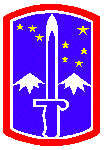
Updated 05 August, 2010




Updated 05 August, 2010

B battery was one of three Nike-Hercules missile firing batteries that were the last to provide a defensive ring of fire around a North American area defense during the Cold War. While operating from 1959 until 1979, it was the home and place of business for hundreds of US servicemen and civilian engineers that, together with Alpha, Charlie, and Headquarters batterys, provided an alert eye and a protective shield over the airspace of the Anchorage area. In the event of Soviet aggression in the form of massive airborne attack, or even ground assault, the men and missiles of the 43rd Air Defense Artillery stood ready to neutralize the threat.
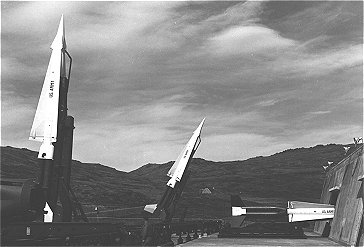
This webpage is an attempt to preserve some memory of the place and time that is rapidly disappearing. If you came across this webpage by means other than the link from the NIKE-HERCULES ALASKA INDEX page, you may wish to go there first for a little background information on the Cold War and the Nike-Hercules mission in Alaska before proceeding. Please CLICK HERE to do so, then follow the Site SUMMIT - B Battery link back to here. Thank you.
A Note Regarding Sources:
This webpage is also an effort (with permission) to preserve on the internet some of the material that was contained on Jeral Sexton's fine but no longer extant Site Summit, Alaska - Nike Hercules ADA website, which from 2003 to 2007 served not only as a sort of collection point for photographs and short notes submitted by personnel that served at site Summit, but also as a bulletin board for information regarding the efforts to preserve site Summit as a national historic site for the edification of future generations. Mr. Sexton has not only been active in preserving the history of site Summit on the internet, but he has also been a very active driving force in the effort to preserve the actual physical property as a public historic and recreational area for future generations. Many thanks are due him for his efforts. I would direct those interested in learning more about this preservation issue to visit the new Friends of Site Summit webpage.
A complete backup of the many dozens of submitted photographs, or the many short comments in the guestbook from Mr. Sexton's original website is neither practicable nor appropriate in this venue, though an effort is made to preserve a large and representative sample in the spirit of keeping the history alive and the flavor of the place and time fresh for the reader while using the format of the other Nike Alaska webpages. The photographs on the original website were submitted by numerous and varied persons and all thanks and credit is due them, but in keeping with the uniform annonymity policy of these webpages, and in the interest of efficiency, no effort is made to proffer individual credit. This is a labor of love and a group effort and that should be obvious to the reading public.
With that said however, I would like to acknowledge the contributions of Tracy Bunting, Oscar Dean, Jim Hillman, William Lynch, Lee Severance, Jeral Sexton, Billy Sparks, and Milt West, whose names appeared on Jeral's original website.
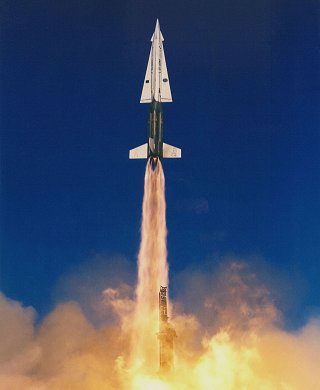
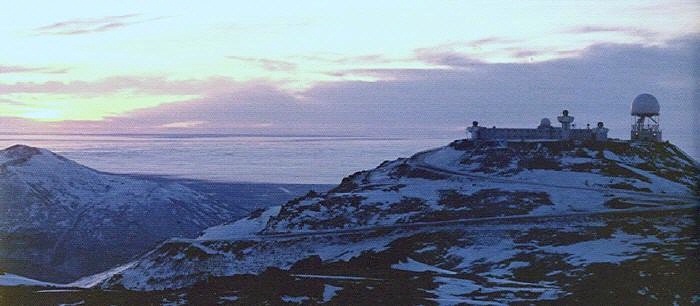
B Battery was stationed at Site Summit, situated atop mount Gordon Lyon in the Chugach mountain range just east of Anchorage, with a commanding, panoramic view of the entire area surrounding Cook Inlet. The mountain was named in honor of the man that served as project engineer in building the site. CLICK HERE to read a short article about him. By the way, building and installing these Alaskan missile sites was not a simple undertaking. You can read more about this by visting Bill Momsen's Installing Nike Hercules Missiles in Alaska webpage.
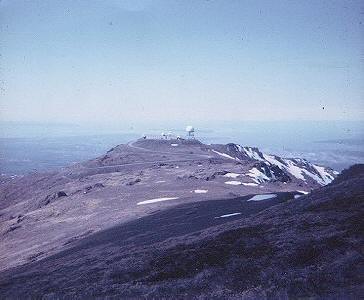
On clear days from site Summit one can see as far south as the Iliamna and Redout volcanoes (left image) and as far north as Mt. McKinley itself (Right inmage).
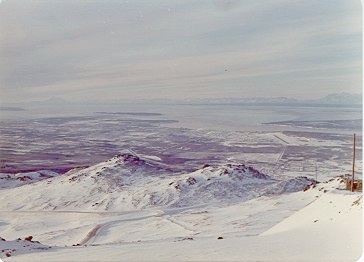
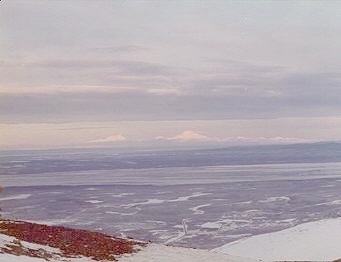
Here is another shot toward Anchorage and Fire Island on a clearer day, showing the snow-covered Chigmit mountains of the Alaska range, far across Cook inlet. To the south of these begins the Aleutian range. What a view!
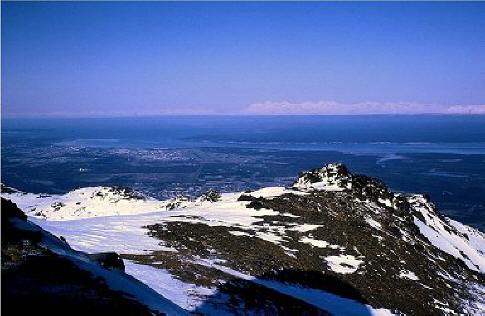
At night the view of Anchorage and beyond is spectacular.
This view of the town was taken about 1973.
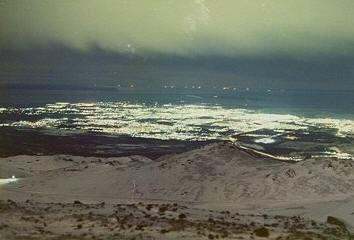
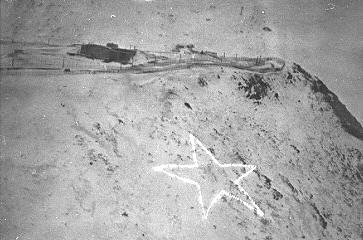
Mount Gordon Lyon also provides an excellent site for a large Christmas star which has been lit and maintained for the benefit of the Anchorage area residents every year since 1960. The site first became operational on 5 May, 1959.
On the left below is a view toward Ship Creek valley.
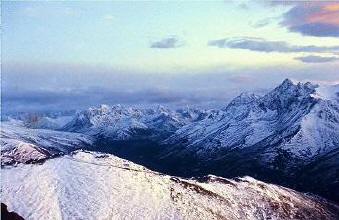
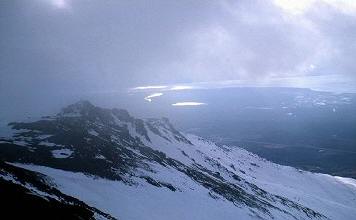
As you can guess by these photographs, the increased elevation of the site results in additional climatological challenges. There are no trees as it is above timber line, and icy conditions come earlier in the fall and stay later in the spring. The wind can be absolutely vicious. Note the steel rods anchoring the side of the main building to concrete slabs in the ground in the photo below.
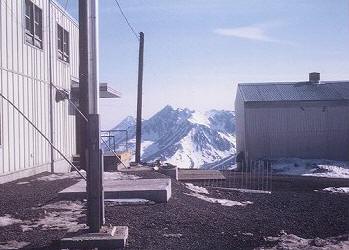
An early commander of B battery writes about an incident during construction of an outbuilding: "The contractor had been soundly warned by the Post Engineer and by site personnel that winds often exceeded 80 to 100 knots (the anemometer "pegged" at 120 several times each year and was blown off its pole twice to my knowledge). We were "snowed in" for several days while the transformer building was incomplete. The second day of that isolation, the wind kicked up. The contractor (not present at the time) had parked a flatbed truck at the site. Its load of sheet metal siding was not firmly secured. Soon, individual panels started flying off the truck and across our parking lot. Several privately owned vehicles were struck and badly damaged. Many of us stood at the Mess and Day Room windows and watched the havoc. I had ordered everyone to remain inside, fearing serious [injury] if anyone were "sliced" by a panel. One of our Fire Control tech sergeants watched numbly as a panel went end ways into the rear window of his new car. Stuck there and battered by the wind, one end of the panel repeatedly beat the outside of the car while the other literally chewed up the interior."
Access to site Summit was provided by a winding dirt road from the environs of Fort Richardson or by helicopter when the weather permitted.
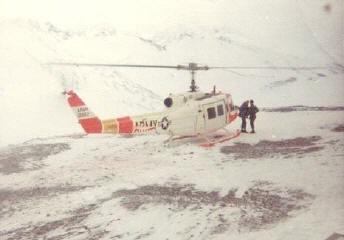
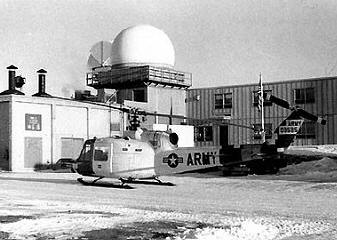
In the view of the road intersection at right below, a right turn would take you to Alpenglow;
a left turn would take you up the road in the left photo toward B battery.
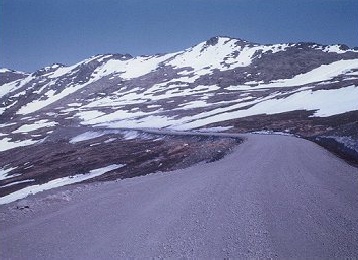
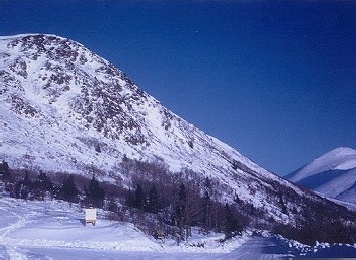
The final aproach to the IFC area.
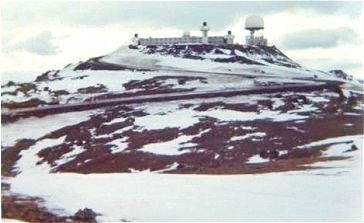
Two views of the hairpin curve behind the IFC area:

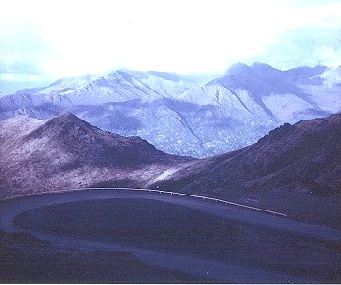
The first curve in the road coming down from the IFC:
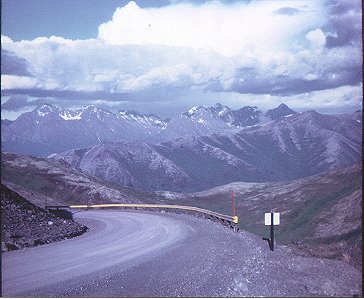
And the reverse view, roughtly.
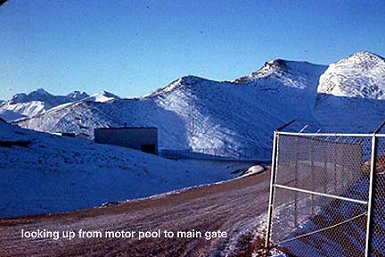
Many laborious man-hours were spent through the winter months keeping that road open.
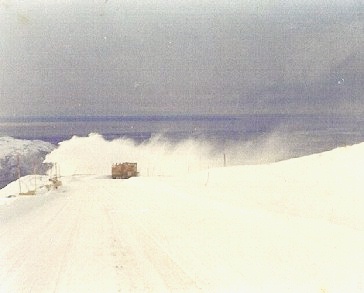
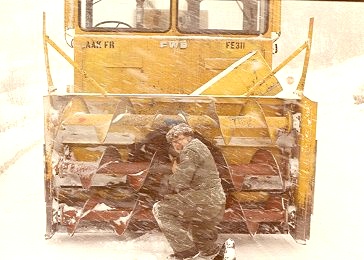
There were 2 snow plows working 24/7 at times and drifts over 10 feet were not uncommon.
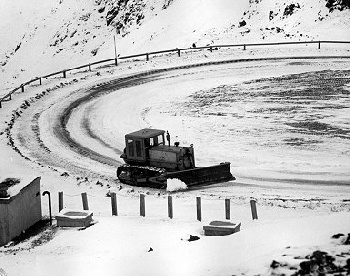
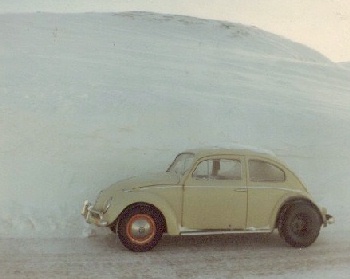
One contributor to this webpage notes:
I'll never forget one morning, winter '63-64 - was a white-out and travel was 1-way up that morning. My passengers were walking each side of the car, one hand on the hood, following the snow-blower's path. All of a sudden, I realized we were driving where I didn't recall a guard rail, then the walking passenger on the right side slipped out of view. I never figured how we had followed the snow-blower trail "behind" the guard rail, but we were in the process of driving off the mountain. So much for memories, Without a common frame of reference, it's hard to explain such things to my family and friends here in the North Florida woods."
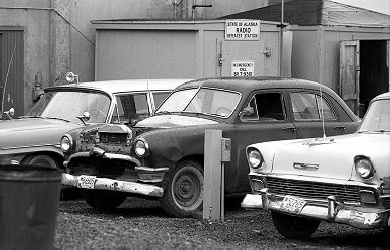
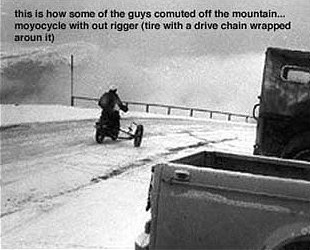
Being a sensitive military site, security was always a top priority. Access was only granted to properly authorized personnel via the appropriate gates. There was a main gate to the site as well as a gate to the launcher area.
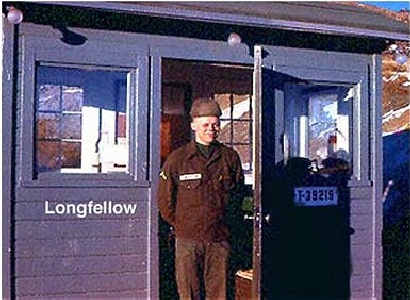
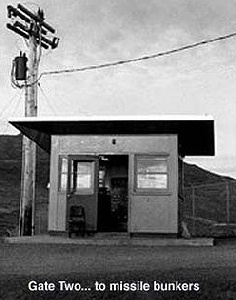
The MP's and dogs that were responsible for security pulled some long, cold,
boring duty in the towers, gates and exclusion zones.
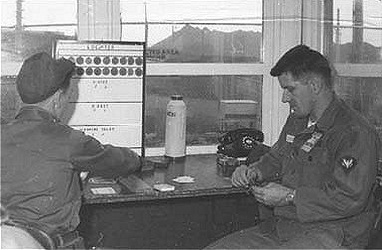
Don't mess with them. Deadly force is authorized.
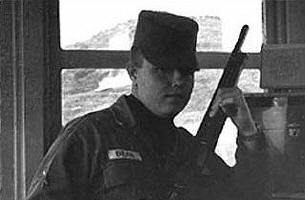
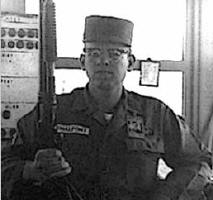
At the main barracks area there was plenty of manpower for security as well.

the Integrated Fire Control (IFC) area and, roughly a mile away, the Launcher area, sometimes called "downrange" by the soldiers. The IFC area consisted of the various radars, communications, and command and control equipment. Alaskan Nike sites incorporated most of this into one main building that also served as barracks, dining facility, emergency medical clinic, convenience store, and recreational facility. That is a lot to fit into one building and needless to say, being cooped up and isolated in a place like that through the middle of an Alaskan winter can result in a touch of "cabin fever". More on this later.
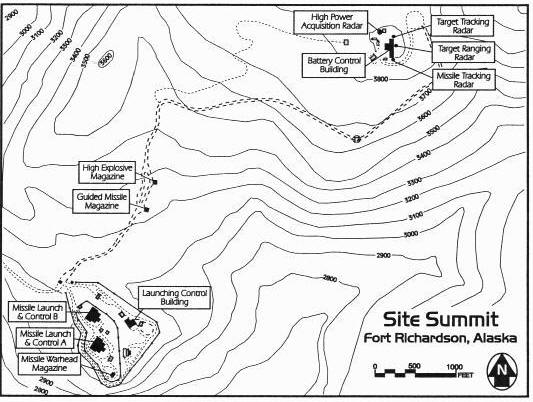
To ensure that the angular slew rate of the MTR's (Missile Tracking Radar] antenna mount was not exceeded by the speed of the ascending missile, the launcher area had to be sited roughly one mile away from the IFC area. Below. at top and bottom, are views from the launcher area looking toward the IFC, and from the IFC looking toward the launcher area, respectively.
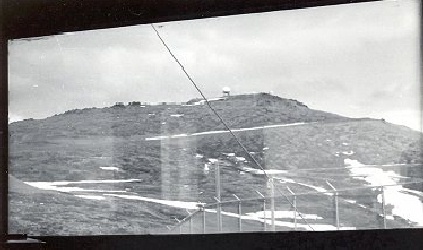
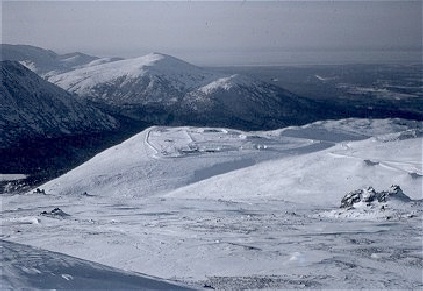
The IFC Area
Below are some photos of site Summit's IFC area. The first was taken about 1963, and the second, from a different angle, about 10 years later.
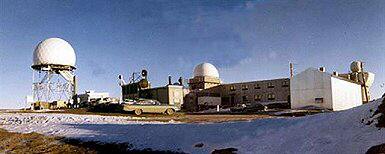
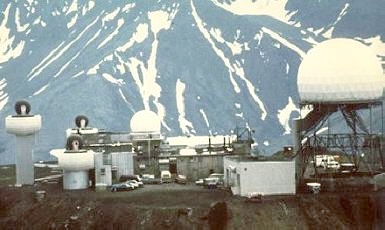
Here is a view of the HIPAR (High Power Acquisition Radar) dome, and a photo of one of the contiributors to this webpage sitting next to the dome of the LOPAR (Low Power Acquisition Radar) atop the main IFC building. What a view, huh?
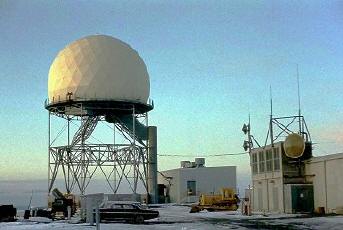
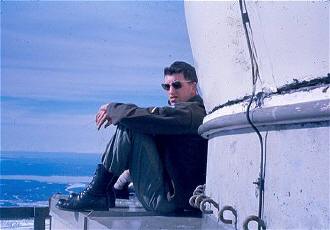
In the photo at left (above), mounted to masts attached to the main IFC building can be seen three of the small dish antennas that provided microwave communications links to the other sites. Below is a closer view of the one (I believe) that provided a link to the AADCP (Army Air Defense Command Post) on Fire Island.

After about 1970 the AADCP was moved to Site Point where A battery was situated. To learn more about the mission and operations of the AADCP, you may wish to visit the Site POINT webpage.
In the room beneath these microwave dishes could be found a couple of 250 Kilowatt diesel-powered generators and their fuel tanks that provided electricity to the site in the event of interruptions of off-site power service - and the power control panel of course.
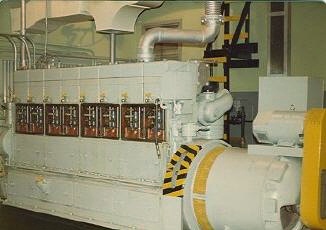
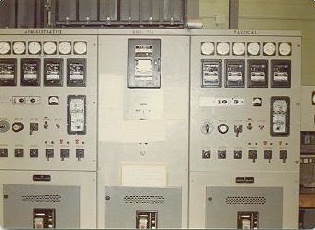
Unique to the Alaskan sites were the steel "clamshell" covers for the various radar antennae that would close to provide shielding from the harsh environment while periodic antenna maintenance was performed. Here are two views of the tall tower supporting the TTR (Target Tracking Radar); one with the antenna in operation and the other with the clamshell closed.
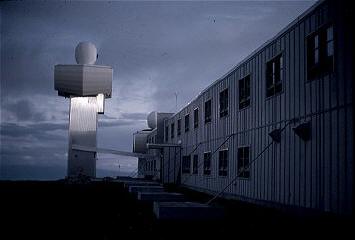
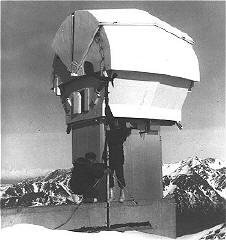
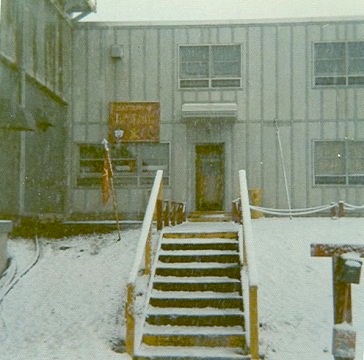
Just beyond this door can be found the dining facility (which to some was the most important feature of the site) and the Day Room, which was the central social and recreational area. This area also housed the "Site Exchange", a convenient place where one could buy candy and razor blades and other sundries. Below are a couple of views of the day room.
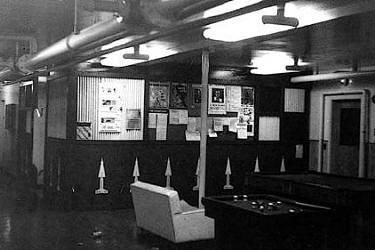
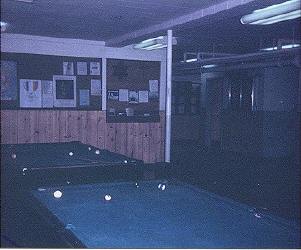
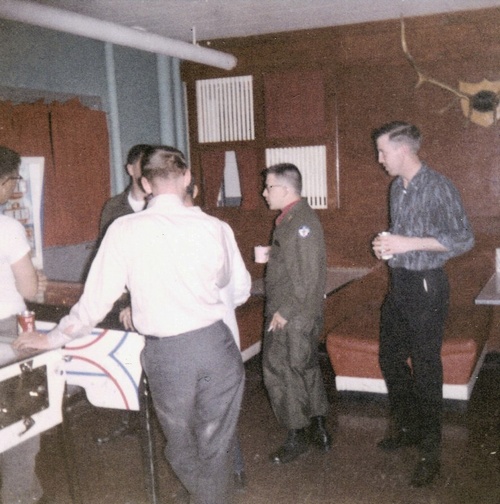
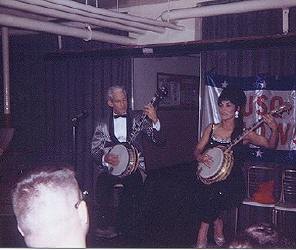
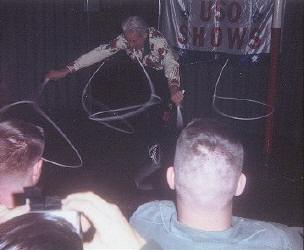
It looks like 1963(?) was a very good year too. Names, anyone?

The tactical business end of the IFC was mostly contained in a couple of large trailers or vans incorporated within the main building, which housed the various consoles where radar and other data came together and the fire control officer and crew could track and target the Bad Guys. During an exercise or alert this is where the action was. Even during the day-to-day operations one would find one or more of these positions manned around the clock as integration and comunications with the AADCP was a continual task. At left is a view into the tracking van, and at right is a view of the TTR console.
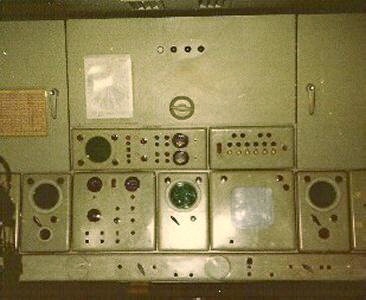
At left below is a photo showing the Long Range, Fire Control, and Short Range positions.
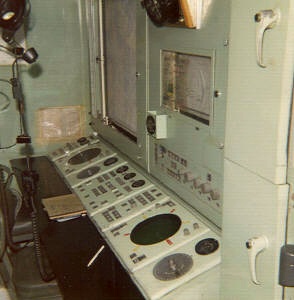
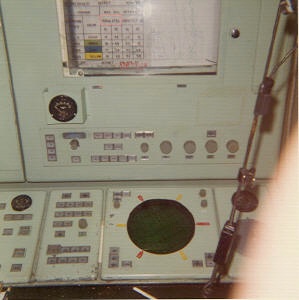
Some communications equipment and another of the tracking consoles...
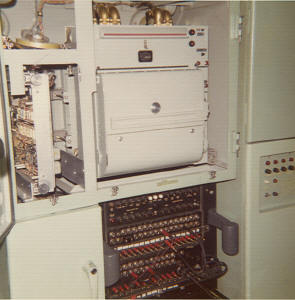
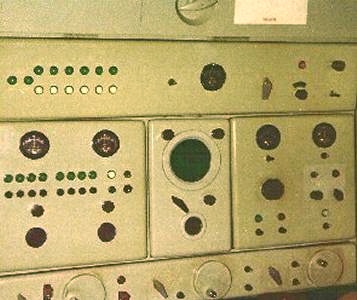
We cannot forget the guys that kept the radars running or the tech types that provided the glue that kept it all together either. The fellow at right provided many fine quality photographs to the Site Summit web page.
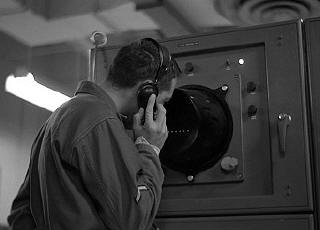

The Launcher Area
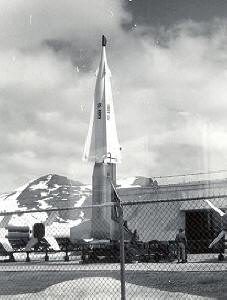
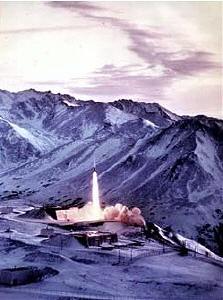
As the IFC area served as the eyes and ears of a Nike site,
the Launcher area served as the shield and sword.
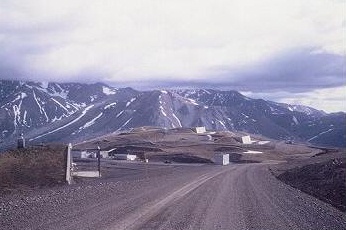
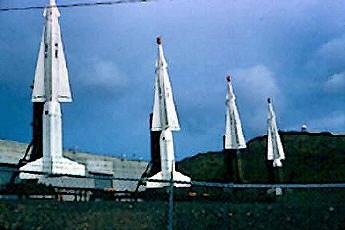
The launcher area consisted of a double-fenced and well patrolled perimeter that contained two launcher buildings where assembled missiles were stored on rails and launchers, ready to roll out and fire if need be. Other buildings included guard dog kennels, the launch control building, and warhead and rocket motor storage bunkers.
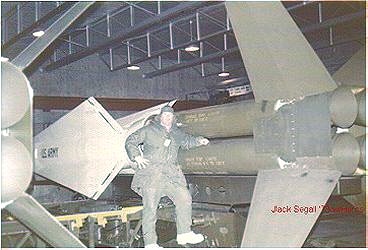
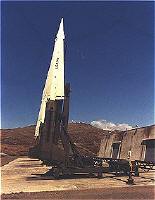
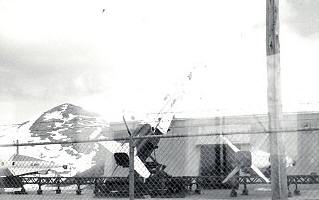
From the time that the Alaskan Nike sites became active in 1959, until 1964 when population growth in the area made it impractical, Site Summit was the place from which all of the Anchorage area batteries fired their ASP (Annual Service Practice) rounds. After that time the Anchorage area batteries traveled to the Fairbanks area missile sites of the 562 Artillery for ASP launches. After the Fairbanks area sites were deactived in 1970 it became necessary for the remaining batteries of the 43rd ADA to travel every year to Fort Bliss Texas and MacGregor Range for live fire exercies.
This brings up an incidient that highlights another of the unique features of site Summit As mentioned above, the MTR (Missile Tracking Radar) of a Nike site had to be located a good distance away from the missile launch area. Below is an anecdote submitted by a past commander of the battery at site Summit:
"November 1962, Site Summit once more "hosted" the 4th Missile Battalion's Annual Firing Tests. Battery A was scheduled to fire first. Their crews took temporary command of the site and its facilities, and prepared for the first launch. Every military and civilian dignitary in the area was present for the big event. Everything was going great. The RCAT (Radio Controlled Aerial Target) was acquired at near maximum radar range, the battery firing drill was flawless, and the launch proceeded as scheduled - but - the missile "self-destructed" shortly after launch. Analysis of the computer records indicated that the Missile Tracking Radar "lost" the missile almost immediately after launch. The absence of radar commands caused the missile to destruct to prevent it from proceeding "out of control".
"Everyone in the battalion was shocked. All previous launches from Site Summit (six per year for [3 or 4] years) had been dramatic successes. Not only Battery A, but all of us were red-faced. With the second launch scheduled, every effort went into finding the cause of the failure. Every equipment and procedure test was checked and double checked. No fault was found. It was reluctantly concluded by the commanders and technicians that the failure was an unexplainable anomaly. The second launch would proceed as scheduled. It also self-destructed shortly after launch.
"Although Battery A had control of our equipment during the failures, it was our equipment that had failed. From the moment the first missile exploded, [our Chief Warrant Officer] had determined to find out what went wrong with "his" equipment. He ran test after test and soon suspected that the problem lay in the missile tracking radar; but what could explain the difference between these failures and the previous successes?
"Researching the MTR maintenance records over an entire night, he found that a major modification had been made after the last successful shoot. The modification had "tightened" the MTRs tracking by accelerating its response to deviations of rate. It had been designed at Redstone Arsenal to improve results of Simultaneous Tracking Tests used as routine equipment checks. (In STTs, the MTR was switched to the target tracking mode. A unit's Target Tracking Radar and Missile Tracking Radar then locked on to a single aircraft target, and the computer would record any difference in the location reported by the two radars. The closer the two reported positions, the more accurate the two pieces of equipment.) The modification had proven successful in all units except one, Site Summit.
"Site Summit was the only Nike Site in the world with a great difference in altitude from its Fire Control area to its Launching Area. The MTR had to point down to lock onto a missile on its launcher. In previous years that had been no problem, because the MTR responded slowly to changes of rate (when compared the TTR). However, with the modification, the MTR over-reacted to the initial acceleration of the missile off the pad, surged past the missile in elevation, then surged back down in elevation to try to reacquire the missile. Thus it completely lost lock on the missile long enough to activate the self-destruct feature.
"The Chief Warrant Officer convinced me and the battalion staff; so the battalion Commanding Officer notified Redstone Arsenal, and they sent a team to investigate. The team leader was a ranking civilian engineer who had helped design the modification. He frankly stated that the team's purpose was to prove that the modification of the MTR tracking rate did NOT cause the failures. His team checked and re-checked all the equipment, and announced that they would conduct a successful firing with the modification in place.
"It was the custom for the commander or crew to name each test missile. We named the missile to be fired under supervision of the Redstone Team "Your'n" (pronounced "Urine"), because it certainly wasn't "our'n". It failed exactly as had the two previous shots.. The "Redstone Modification" was permanently removed from our MTR, and all remaining missiles in the 1962 annual firing from Site Summit successfully hit their targets."
For the record, another contributor notes: "The account of the problems encountered in 1962 live firing from site Summit were really flying around my Ordnance group in 1963. A story I heard from people who were there in 62 is that the MTR had locked onto a reflection from the fence instead of the missile itself. As soon it lifted off, the echo path was broken and the lock on the missile was lost. BOOM! The story about the mod was also related but I think the story of the fence echo is also true. This was determined by looking at where the antenna was actually pointing through the spotting scope attached to the MTR antenna."
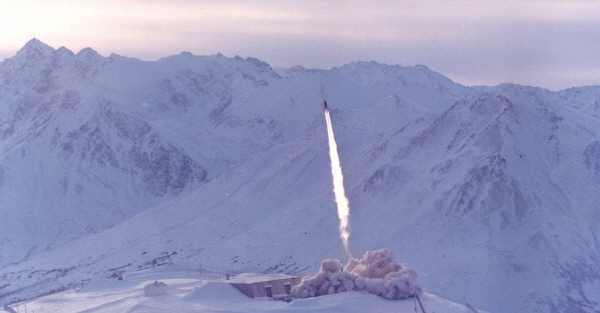
Winter Indoctrination training was/is a requirement for all soldiers asigned to Alaskan units. When I was there the basic introductory course was called SnowHawk Fledgling Training and consisted of spending a few days in the woods, snow, and ice enjoying nature and sitting through classes on cold weather survival and using the issued cold weather gear. At least one night was spent in an individual lean-to constructed from one's shelter half and poncho and sticks and branches and snow. Having grown up in an alpine environment this was a fun and normal activity for me, though it seemed to be pretty rough on the boys that grew up in urban places like Atlanta, St. Louis, and LA.
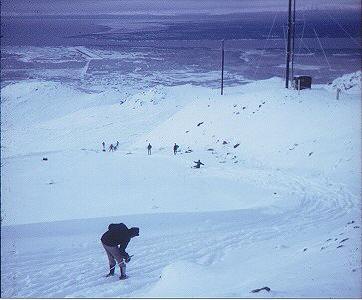
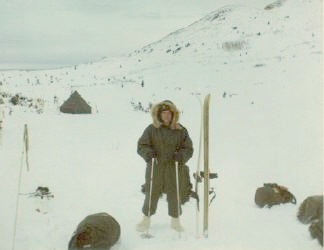
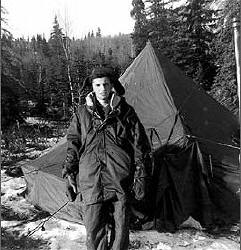
The training certainly didn't go to waste for the denizens of Site Summit though, as it served to better prepare them for recreational forays into the winter weather to help curb the effects of cabin fever. A snow cave can be a cozy respite from ice and wind.
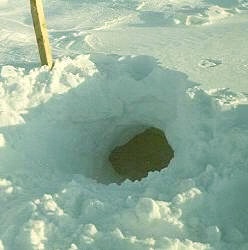
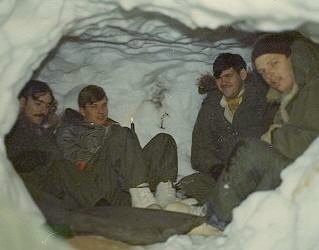
Not only serving as companions and alarms, dogs have a long and distingished history serving as soldiers, guards, and messengers. All of the Alaskan Nike sites were continually patroled by working dogs such as Braum at left and Shadow at right.
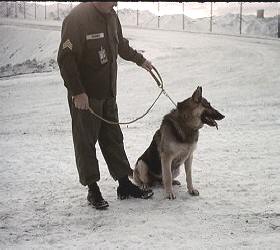
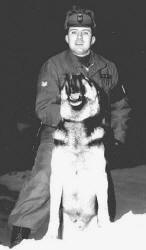
These dogs and others were highly trained and capable soldiers and you wouldn't want to mess with them.
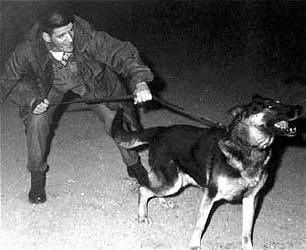
Other dogs served with distinction simply as mascots for the battery. This too was a valuable service for the many hours of companionship they provided to the guys that lived and worked there. The photograph at left below is of Peanuts, who was the original site Summit mascot, and before that was the mascot at site Point. The photo at right is Colonel Peanuts circa 1963.


An officer who served as the Battery Commander in 1962, and later as the Battalion Commander in 1969 writes about Peanuts: "...was a male mixed breed. He was inherited from the Gun Battalion which preceded the 4th Missile Battalion in defense of the Anchorage/Elmendorf/Fort Richardson complex. His Gun Battalion duty station was Site Point (Later Battery A, 4th.)
"Peanuts was relocated to Site Summit among the first troops stationed there, and "served" until some time after 1963. (If anyone knows his final date please let me know.)
"Peanuts' duty assignment was as shown, surveillance of the road from the launcher to the fire control area. He had an intense dislike of staff officers, usually distinguishable by their Class A uniforms, and would growl fiercely if approached by one.
"Apparently he had run afoul of some early Mess Sergeant, and would not set foot in the mess hall. He loved to chase balls in the day room area. Now and then a thrown ball would stray into the dining room. Peanuts would chase madly after it then slide to a stop just before his toenails touched the glossier wax of the dining room floor. If blindfolded and then put down in the dining room, Peanuts totally panicked when the blindfold was removed and beat a hasty retreat to the Day Room.
"Like most young bachelors at Site Summit, Peanuts suffered greatly from the lack of feminine contact. Our Security Sergeant explained the problem to the Post Veterinarian who cared for our guard dogs. The Vet was sympathetic, and would call every few months when he had a stray female in heat. We would send Peanuts to the vet for R&R for a day or two. He always returned a much calmer GI. Too bad we couldn't do as much for some of our young troops."
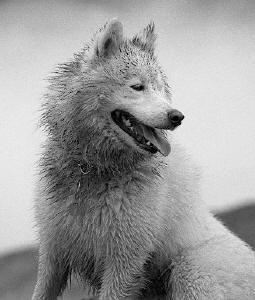
Here he is next to an expended booster rocket in about 1963, and suffering the ignominy of a bath.
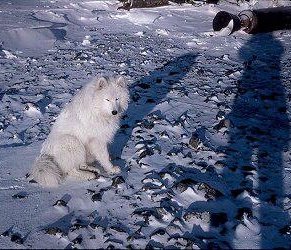
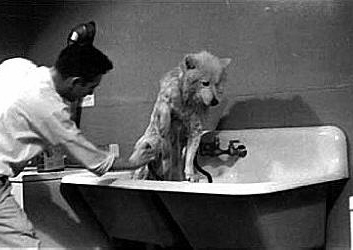
At right, Nike and a young Lue about 1965.
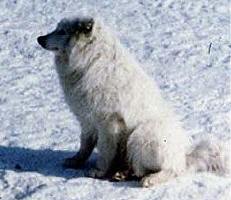
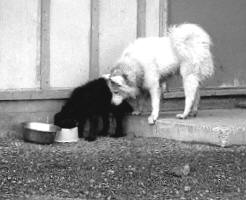
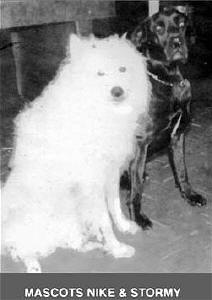
Stormy at left below, and young Lue at right:
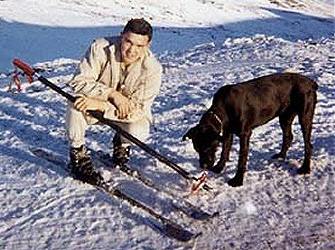
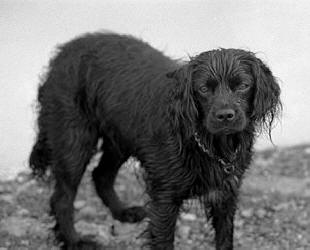
Lue about 1967: "a faithful companion to all."
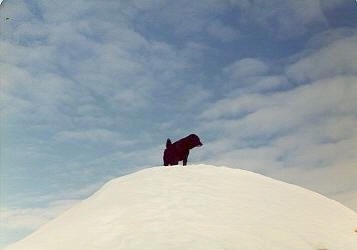
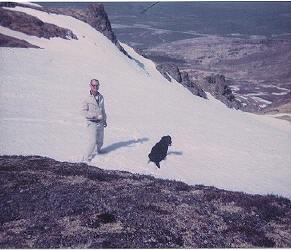
And below, Lue about 1973
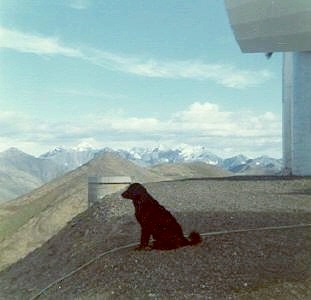
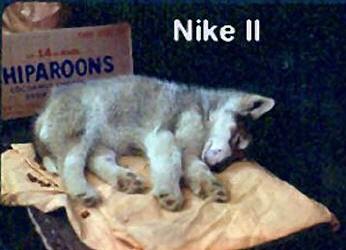
The value of a dog's companionship (or three) when traveling in the woods in bear country cannot be overstated. The mascots of site Summit more than earned their keep when accompanying soldiers who ventured into the outdoors for recreation and exercise. This appears to be Nike and Stormy in about 1963.
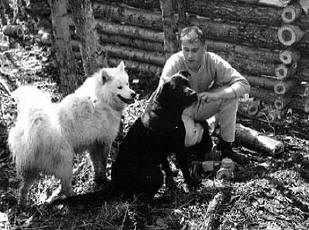
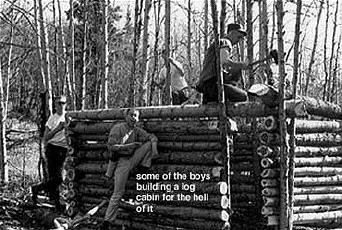
The caption of this photo says "Nike and Black lab actually killed this badger, an amazing sight."
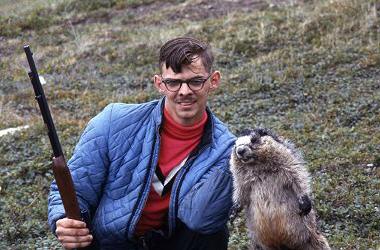
Trips to the various creeks and rivers when the salmon make their runs was always a favorite activity for Nike site soldiers.
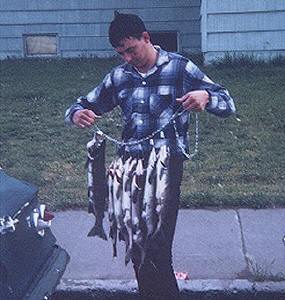
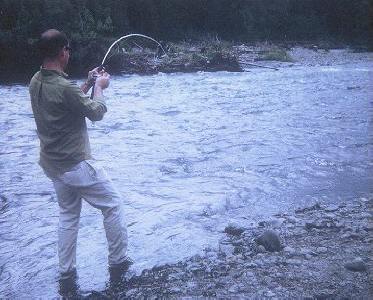
In the face of a changing Soviet threat, and budgetary constraints due to the VietNam war, the Nike sites around the Fairbanks area were deactivated in 1970 and 71. The 4/43rd also lost one half of the dual unit at site Point, and the AADCP was moved from Fire Island to the now empty building at site Point. It was at this time that the battalion was redesignated as the 1/43rd ADA.
By 1972 rumors of deactivation were floating around the battalion, and these continued until the reality occured in 1979. The military/political situation of the Cold War had changed to the point that the cost of maintaining the battalion was no longer justified by NORAD's defensive requirements.
The 1/43 ADA, the last remaining Nike-Hercules battalion sited in North America, stood down in April of 1979, ending a solid 20 years of continuous, around the clock service in the defense of the Anchorage area. During a ceremony at Fort Richardson on 30 July 1979, the battalion's colors were sheathed, and the battalion was deactived, closing a colorful chapter in the history of the Cold War that was to continue another ten years.
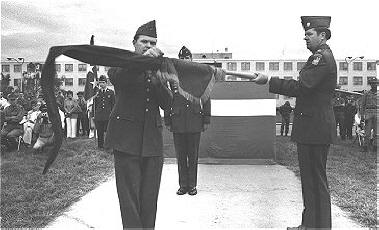
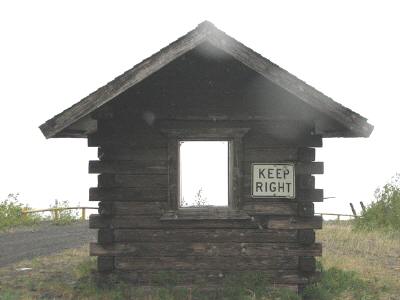
Over a quarter of a century later, the facility at site Summit remains. The radar and missile equipment is gone of course, but most of the buildings and other infrastructure remain in addition to a couple of new antenna towers maintained by the FAA. In spite of its rugged appearance, site Summit remains the best preserved and, for all practical purposes, only remaining example of an Alaskan Nike missile site. Very little, if any, of the other sites remain. Some have been totally erased from the face of the earth.
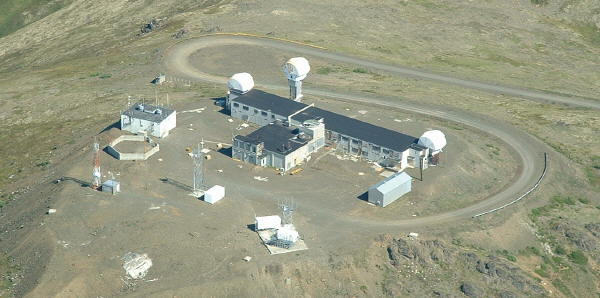
Below are a few photographs of the site taken in 2006:
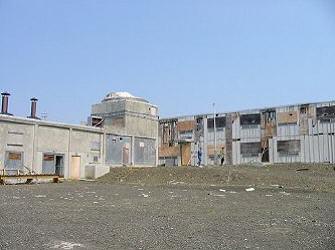
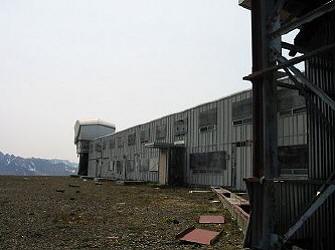
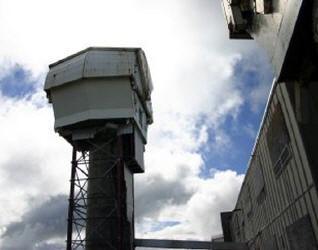
Here are a couple of views inside the main IFC building. The photo at right is of the upstairs barracks hallway.
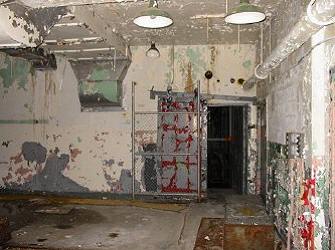
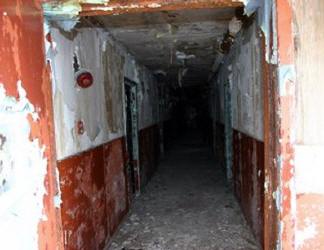
A view toward the launcher area, and a few shots of the buildings:
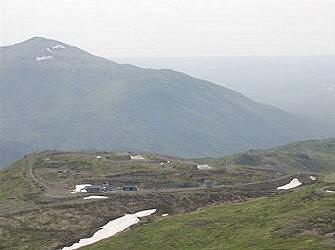
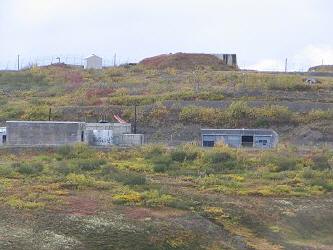
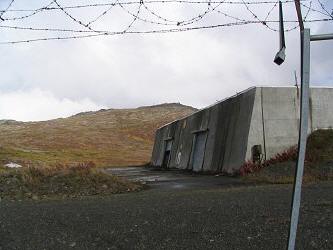
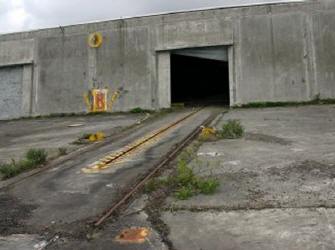
One of the storage bunker along the road to the IFC:
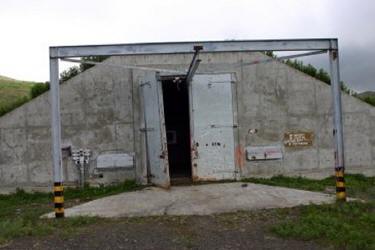
Below are links to a number of fine quality aerial photographs of the IFC area at site Summit taken by a Civil Air Patrol volunteer in August, 2003. Be advised that these are fairly large files (about 750K each) so if you have a slow dialup connection they may take a few minutes for each to download (some are a bit redundant):
If you have a fast internet connection, you may find this VIDEO of the area to be of interest too.
Considering the unique design of the Alaskan Nike sites, the still-restorable condition of much of site Summit (which is the single remaining intact example), and the fact of its significant historical and cultural value as an icon of the Cold War and Alaskan history, there is a movement afoot with the goal of preserving the site as a historical landmark for future generations. To view a pamphlet about the history of site Summit put out by the Alaska State Historic Preservation Office, CLICK HERE. It mentions a few of the preservation milestones achieved to date:
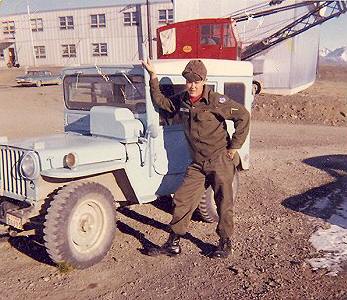
- Juliet Tango Sierra
June, 2007
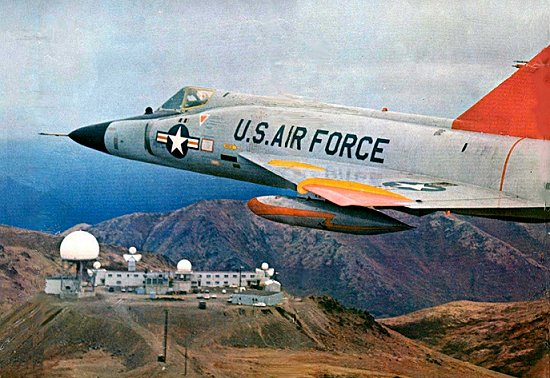
The times may be gone, but they are not forgotten.
visits since 5 June, 2007